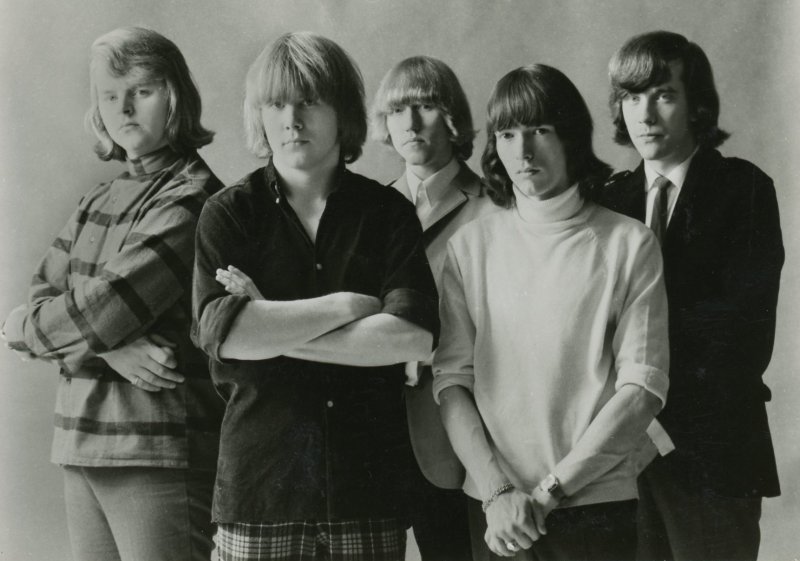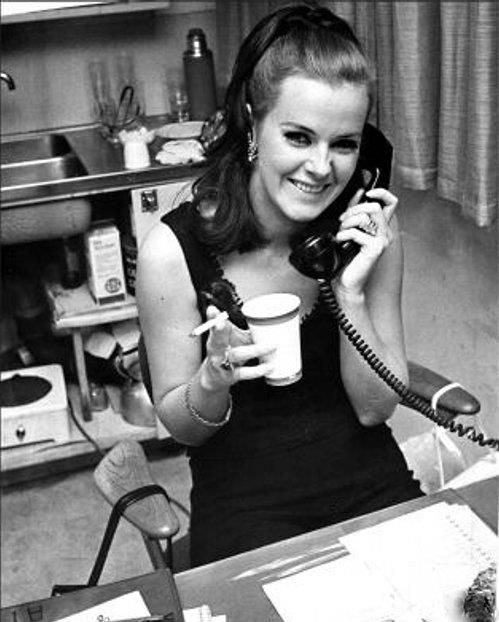From stars in their native Sweden, ABBA became a global pop culture phenomenon. ABBA was a pop group from Stockholm, Sweden from the 70s music to 80s music era. Band members consisted of Anni-Frid (Frida) Lyngstad (vocals), Bjorn Ulvaeus (guitar), Benny Andersson (keyboards), and Agnetha Faltskog (vocals). The group had 14 US Top 40 hits, (4 of which hit the Top 10) and multiple other chart hits throughout the world. Bjorn and Agnetha were married from 1971-80. Benny and Frida were married from 1978-81. All 4 performers were successful performers in Sweden before coming together to form ABBA. ABBA record albums reached Platinum sales in countries all over the world. ABBA has never officially dissolved, but theyhave not performed as a group since 1982. The successful Broadway play “Mamma Mia”, consists of all ABBA songs and has been performed all over the world. ABBA was voted into the Rock And Roll Hall Of Fame in 2010.
ABBA oldies music hit songs include:
- Waterloo
- Dancing Queen
- Take A Chance On Me
- The Winner Takes It All
- Rain Rain
- Honey, Honey
- SOS
- I Do, I Do, I Do, I Do, I Do
- Mamma Mia
- Fernando
- Knowing Me, Knowing You
- The Name Of The Game
- Does Your Mother Know
- Chiquitita
- When All Is Said And Done
- Super Trouper
- Voulez-Vous
- Money, Money, Money
- The Visitors
- One Of Us
- On And On And On
- Angeleyes
- Under Attack
- The Day Before You Came
- I Have A Dream
- Our Last Summer
- Thank You For The Music
- People Need Love
Members of ABBA
Agnetha Fältskog: Born on April 5, 1950, in Jönköping, Sweden, Agnetha is a singer, songwriter, and actress. She started her career as a solo artist before joining ABBA. Agnetha is known for her distinctive voice and was often the lead vocalist on many of ABBA’s hits. After ABBA, she continued her solo career.
Björn Ulvaeus: Born on April 25, 1945, in Gothenburg, Sweden, Björn is a songwriter, producer, and member of ABBA. Prior to ABBA, he was a member of the folk music group Hootenanny Singers. Björn played a key role in songwriting and production for ABBA. He later collaborated with Benny Andersson on several musicals and other projects.
Benny Andersson: Born on December 16, 1946, in Stockholm, Sweden, Benny is a musician, composer, and producer. Before ABBA, he was a member of the pop group The Hep Stars, often referred to as “The Swedish Beatles.” In ABBA, Benny was the primary composer and keyboard player. Post-ABBA, he continued to compose for musicals and film scores.
Anni-Frid Lyngstad: Commonly known as Frida, she was born on November 15, 1945, in Ballangen, Norway. She is a singer and songwriter. Frida started her career as a jazz singer before joining ABBA. Her powerful voice and stage presence were integral to the group’s sound. After ABBA disbanded, she pursued a solo career.
Formation of ABBA
Long before ABBA became world super stars, each of the members were established artists in Sweden. But just like with any other musical legend, ABBA’s ascent was no fluke. Benny Anderson was once a member of the famous 60’s pop music group, The Hep Stars, also known as the Swedish Beatles. Bjorn Ulvaeus, meanwhile, was a vocalist and guitarist of a folk group, The Hootenanny Singers. Anderson and Ulvaeus wrote songs together while on tour with their bands.
ABBA’s Agnetha Faltskog attained popularity as a singer-songwriter who enjoyed many hit songs in the Swedish charts. While some of her hits included covers of foreign music, Faltskog’s most successful songs were the ones she wrote herself. Anni-Frid Lyngstad was also a successful solo singer; her material comprised of jazz, cabaret, and bossa-nova. Lyngstad’s “En ledig dag” which is a Swedish rendition of “A Day In Portofino”, shows her astounding vocal range and is one of her best early works. Ulvaeaus met Faltskog for the first time while they were filming a nostalgic pop music TV special in 1969; soon they started dating, and eventually married in 1971. Anderson and Lyngstad met also around the same year and soon would be live-in partners.
Faltskog and Ulvaeus participated in each other’s recording sessions. Through Anderson’s friendship with Ulvaeus, he and Lyngstand began recording with Ulvaeus and Faltskog as well. The quartet’s first official collaboration was a stage act called “Festfolk”, with Ulvaeus and Anderson taking on the vocal lead while the women were backup singers. Unfortunately, Festfolk was a failure, with the exception of an Ulvaeaus-Anderson composition “Hej, gamle man” (Hey, Old Man) which became the first charting single for the group.
The Road to Success
The founder of Sweden’s Polar record label, Stig Anderson, saw potential in Ulvaeus and Benny Anderson’s songwriting talents. Anderson encouraged the duo to contribute songs for Melodifestivalen, an annual music competition in Sweden. In 1972, Ulvaeus and Anderson came in third at the Melodifestivalen with their song, “Sag det med en sang”. It eventually became a hometown hit and encouraged Ulvaeus and Benny Anderson to continue working on their songwriting skills.
The quartet followed up with their single, “People Need Love”. This song was a hit and was well received in Sweden and abroad. “People Need Love” opened the door for the foursome to begin recording and performing full-time.
The quartet began working on a new album later that year and submitted their song “Ring, Ring” to the Melodifestivalen music contest. Stig Anderson was convinced that “Ring, Ring” would be a sure winner at the national competition, but it fell short thus failing to advance them to the prestigious Eurovision contest.
In 1973, the band released their album, Ring Ring, and received good reviews in Sweden, Europe, and even South Africa. They also chose the name ABBA, taking the first letter of the first names of each member of the group.
Winning the Eurovision Song Contest, and More International Success
In 1974, ABBA submitted their song, “Waterloo”, to the Melodifestivalen music contest and won first place. The song qualified for the Eurovision song competition and emerged as Eurovision’s Song of the Year. ABBA’s breakthrough came at last. “Waterloo” became the first major hit for ABBA as it peaked on other European and Australian top ten charts. And most importantly, the single finally made to #1 on the UK charts and broke into the US Billboard Top Ten at #6. Soon the band began their tour of Europe and the United States making many radio and television appearances.
But after the success of “Waterloo”, ABBA fell into a familiar slump. The singles they released for the next 18 months barely registered on the UK charts, though they remained well received in Europe. Their big break finally came in 1975 when ABBA’s single, “SOS,” returned the group to the UK charts. The band soon found themselves scoring another hit in the U.S. and Down Under.
Finally, a #1 US hit with “Dancing Queen,” and more big chart smashes for ABBA
A string of hits eventually followed, with chart toppers such as, “I Do, I Do, I Do, I Do”, “Mamma Mia”, and “Fernando.” ABBA’s bright melodies, pitch-perfect singing from Faltskog and Lynstag, and wholesome vibe quickly gained them millions of adoring fans. Although ABBA enjoyed a wide fan base in Europe, American listeners were still a little hesitant to completely embrace this group. In 1977, however, the album Arrival was released in the US, and peaked at #20 on the Top 20 Billboard albums chart. ABBA finally became a US pop music legend when “Dancing Queen” shot to #1 in both the UK and US, thanks in part to the popularity of disco music.Arrival was followed up with a more ambitious release, The Album, to accompany their film, ABBA: The Movie. It spawned hits such as “The Name Of The Game” and “Take A Chance On Me” which peaked at #3 on the Billboard charts.
Divorce of the Band Members, and the Breakup of ABBA
Despite ABBA’s success, all was not well within the group. In 1979, Ulvaeus and Faltskog announced their divorce, shocking fans and leaving many to wonder about ABBA’s future. Despite the divorce, the band continued to record and tour at sold-out gigs in Northern America, UK, Europe, Australia and Japan. Anderson and Lyngstad married in 1978 after years of being in a domestic relationship, but divorced three years later. In 1980, Super Trouper was the group’s seventh album which contained the song “The Winner Takes It All” , a reflection of the marital dissolution between Ulvaeus and Faltskog. It was number 1 on the UK charts, while it peaked at #8 on the US Billboard Hot 100 and #1 on the US adult contemporary charts. Despite ABBA’s immense popularity, they finally broke up for good in 1982.
Reforming of ABBA
ABBA’s Tremendous and Lasting Impact on the Pop Music World
After ABBA, each individual member went on to build their solo careers, with varying degrees of success. ABBA was was inducted into the Rock and Roll Hall of Fame in 2010. ABBA’s impact on pop culture is extensive and multifaceted, resonating across various domains:


